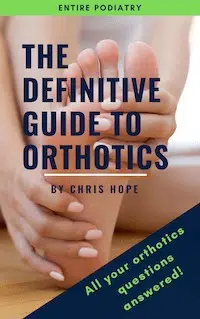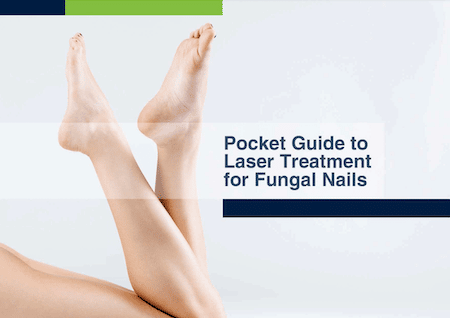What is a neuroma in your foot?
Small nerves are located between each of the long bones (metatarsals) in our feet. These nerves innervate our forefoot and our toes. A Morton’s Neuroma is a painful condition that affects these nerves within the foot.
The classic Morton’s Neuroma involves thickening of the nerve that sits between our 3rd and 4th metatarsal heads. The thickened nerve causes symptoms under this part of the foot and the 3rd and 4th toes. However, a Morton’s neuroma may affect other nerves and symptoms may present anywhere across the front of the foot and the toes.
A typical non-affected nerve is approximately 2mm wide. A Morton’s neuroma can grow to more than 15mm in size. This thickened and enlarged nerve is very sensitive and is easily irritated by the surrounding bones. Irritation and compression of the nerve causes the pain and symptoms of a Morton’s neuroma.
Neuromas can occur in all age groups and are more common in females. Usually only one foot is affected but it may affect both feet.
A Morton’s neuroma is often incorrectly referred to as a motor neuroma or a planter’s neuroma or is confused with a Morton’s foot or Morton’s toe. The name ‘neuroma’ can be deceptive as the naming may imply a tumorous growth, but it’s important to note that a Morton’s neuroma is benign and non-cancerous.
What does a neuroma feel or look like?
Your symptoms may vary depending on which nerve has developed the neuroma.
A Morton’s Neuroma will usually cause pain underneath the ball of the foot, and pain between the toes especially around the 3rd and 4th toes. You may feel a sharp, stabbing or shooting pain or you may notice a burning, tingling or numb sensation. Some people describe an odd sensation in the area such as the feeling they are walking on something like a pebble in their shoe.
If you have a neuroma, you may find that the pain eases when you remove your shoe and massage the area. Typically the neuroma pain is made worse when in tight shoes or high heels as this tends to squeeze and compress the irritated nerve.
What causes a neuroma?
It is not clearly known what causes a neuroma in the foot. However it is thought that the fibrous thickening could be the result of inflammation, caused by the nerve being pinched or irritated by the bones (metatarsals) on either side of the nerve.
Poorly fitting footwear is a common factor contributing to the development of a neuroma. Footwear that is too narrow or tight can compress the foot squeezing and irritating the nerve. High heel shoes also place excessive force on these nerves.
Your ‘biomechanics’ i.e. the structure and function of your feet can also predispose to the development of a neuroma.
- A high arched foot typically carries a lot of pressure under the forefoot which can lead to the development of a neuroma.
- A ‘flat foot’ or an over-pronated foot may also lead to the development of a neuroma. An over-pronated foot is usually associated with instability around the forefoot. This instability causes rubbing and irritation of the nerves.
- Foot deformities such a short big toe/long second toe, bunions, hammertoes or claw toes can also change the way that your foot works and can transfer weight to the ball of the foot. This increased pressure can lead to the development of a Morton’s neuroma.
- Repeated stress to the area can also damage the nerve and can result in inflammation or swelling of the nerve.
How to treat a neuroma
Usually clinical examination by your podiatrist is sufficient to diagnose a Morton’s neuroma. Sometimes diagnostic tests such as an ultrasound and x-rays may be also required to rule out other foot pathologies and indicate the precise location and size of the neuroma.
Following diagnosis, conservative neuroma treatment options may include:
- Advice on appropriate footwear to limit irritation of the neuroma/nerve tissue.
- Strapping and padding may be applied to your foot or shoes in order to take pressure away from the neuroma and irritated nerve.
- Orthotics may also be required to control your foot function by supporting and stabilising the foot and taking pressure away from the injured nerve.
- Injections of local anaesthetic and/or corticosteroids may be needed in order to reduce the inflammation and reduce the size of the inflamed nerve.
Surgery to remove and cure the neuroma is available if conservative treatment does not provide adequate relief of symptoms. However, early conservative treatment has an extremely high success rate and should reduce the chance of needing surgery.
If a neuroma is not treated, it is possible that it could continue to grow and cause greater discomfort in the future. At Entire Podiatry we offer effective treatment plans and early intervention is recommended.
Orthotics for neuroma pain
Foot orthotics are a pair of customised innersoles that are worn inside your shoes. Orthotics can be very useful in the treatment and management of Morton’s Neuroma. Customised orthotics are designed by your podiatrist after they have conducted a thorough biomechanical assessment. This assessment allows the podiatrist to form a deep understanding of the way that your feet work and how and why your neuroma has developed as well as the best way for pressure to be taken away from it to allow healing.
Typically orthotics benefit the wearer for Morton’s neuroma in a number of ways. Orthotics provide arch support which conforms against your foot ‘hugging’ the arch. A well made orthotic helps to spread the pressure evenly across the whole length of the foot, thus transferring pressure off the ball of the foot. Orthotics also stabilise your feet to reduce excessive movement of the bones which can irritate the nerve.
Modern orthotics are cushioned to soften the feel beneath the nerve and additional pads and material can be added to further reduce the pressure from the ball of the foot.
Orthotics can be designed to fit into certain dress shoes for men and dress shoes for women.
Best shoes for neuroma pain
Walking and athletic shoes for neuromas
Joggers and walking shoes are typically preferred by neuroma sufferers as they provide support, cushioning and stability underneath the forefoot. These type of shoes have a wide toe box to prevent compression of the neuroma.
We recommend that you make an appointment with your podiatrist to discuss what type of walking and athletic shoes best suit your foot type and your needs. In the meantime you can view our range online of walking and athletic shoes for men and walking and athletic shoes for women.
Dress shoes for neuromas
A simple first step to ease your neuroma pain is ensuring that you are wearing appropriate shoes. Finding a dress shoe that will reduce the neuroma pain can be difficult but it’s important to look for the following features:
- A wide toe box. The toe box is the part of the shoe that covers the ball of your foot and your toes. It is important this is wide enough so the shoe does not squash the toes and irritate the neuroma.
- A “rocker sole”. A rocker sole shoe is a shoe that has a thicker sole which has a slightly rounded heel and a ‘kicked up’ toe box. This feature helps to decrease pressure at the ball of the foot and subsequently the neuroma.
- A removable insole to accommodate a dress orthotic.
During your consultation at Entire Podiatry we can provide a list of dress shoes for both men and women that are more accommodating when you are suffering with neuroma pain. Before your appointment, you can browse our footwear range online. View our dress shoes for men and dress shoes for women.
Morton’s neuroma treatment for runners
Treatment of Morton’s neuroma for runners is typically the same as for non-runners which a few extra considerations.
For some people, their neuroma pain may only occur when running. However it is still vital that the same footwear advice is followed for both the running shoes and the day-to-day shoes, even if pain does not typically develop outside the run. This includes ensuring adequate width and depth at the toe box and making sure the shoes are the correct type of shoe for your foot type and your walking and running gait. Podiatrists are experts in footwear- if you are wondering if your running shoes could be contributing to your pain then make an appointment with one of our podiatrists for a footwear assessment.
The way your shoelaces are tied could be contributing to your numb feet. If the laces are tied too tightly across the top of the foot this can restrict the blood flow which can starve the nerves of oxygen causing temporary numbness. This may cause the same symptoms as a Morton’s neuroma. If you feel that your laces may be a little tight then you may benefit from modifying the lace style. Skipping a loophole across the top of the foot can reduce the pressure over the arteries.
Runners do have a tendency for ignoring pain! This can get you over the finish line but can also worsen your foot problems. Morton’s neuromas typically begin as an inflammation around the nerves. At this early stage conservative treatment is much more successful. If the pain is left untreated then inflammation affects the nerve itself and the size of the neuroma increases and is more resistant to treatment. Early intervention is vital for successful treatment.
Rest is important to allow healing. If absolute rest is not an option then modifying the training load to include a variety of activities that load the forefoot less, such as cycling or swimming is required.
Surgery for neuroma
Most people are able to successfully treat their Morton’s neuroma using conservative measures such as changing footwear, orthotics, padding, anti-inflammatory medication and rest. If treatment has not been successful using this approach then surgical removal of the inflamed nerve may be required. At Entire Podiatry we don’t recommend surgery as a treatment for neuroma unless it is as a very last resort.
Following surgery, patients will need have their foot elevated until the wound is healed, this can take up to 2 weeks. Patients are then required to wear an immobilisation boot for up to 6 weeks following the surgery. Usually 2- 4 weeks off work is recommended depending on the nature of the work.
The success rate of Morton’s neuroma surgery is typically quite good and is often quoted at 90%. As with any surgery, there is always the risk that the surgery is not successful. The surgery will usually result in permanent numbness of the 3rd and 4th toes as the nerve that innervates this area is removed.
What kind of doctor treats Morton’s neuroma?
Podiatrists are experts in treating any and all foot pain. At Entire Podiatry all our podiatrists are experienced in the treatment of Morton’s neuroma. Visit our about us page to read more about our team of qualified professionals.
As soon as you notice the first signs of foot pain we recommend you give Entire Podiatry a call or make an appointment with us online so we can work together to have you walking pain free.




